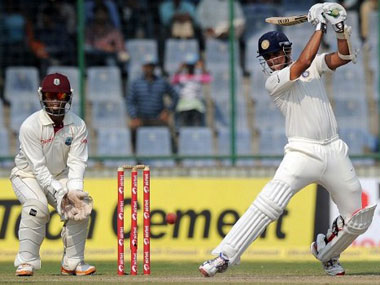When Rahul Dravid and Shivnarine Chanderpaul bat, you can rest easy. You can take your dog for a walk, come back, eat your lunch, switch on the television and still catch these two unsung masters batting — playing Test cricket as it was meant to be. Test cricket, if you ask any old school cricketer, is a test of patience — the bowlers sticking to a line, plotting dismissals and trying to mentally psyche out the batsmen. The batsmen, in turn, batting for time, slowly grinding away, hoping to tire out the bowlers and then take full advantage of the loose balls. But then as 17 wickets fell on a wicket that wasn’t doing too much, the only question one could ask was whether the batsmen of this age have forgotten how to play Test cricket. Dravid and Chanderpaul looked comfortable for as long as they were there. They have very different techniques — Dravid as classical as it gets and Chanderpaul as unorthodox as one can hope to be. But they have shown in their own way that cricket is very much a mental game. Most of the other batsmen came to the middle thinking they could just hammer the opposition into the ground. No slow grind for them. They just wanted to get it over with as quickly as possible. Staying out in the sun wasn’t for them. [caption id=“attachment_125517” align=“alignleft” width=“380” caption=“In 157 Tests, Dravid has done even better with 12,775 runs at 53.00. And how did he get there? — quietly. AFP”]  [/caption] How else do you explain the shot Yuvraj Singh played? India were five wickets down and Yuvraj had the best chance to cement his slot in the team. And for the first 17 balls of his innings he looked like he wanted to do that. He defended calmly. Then on the 18th ball, he stepped out and smashed it for a six. He had had enough. Just last week, when Firstpost had spoken to Yuvraj , he had spoken about how he needs to change his shot selection for a chance in Tests. And today, he showed that it takes more than just plain talk to rectify that vice. All he had to do was look at the way Dravid and Chanderpaul had batted. The old masters would scream themselves hoarse talking about the virtues of playing the ball on the ground. The whole idea being that if you do that, you don’t give a chance to the fielders. It becomes a straight battle between you and the bowler and it’s something that helps you put the numbers on the board as well. In 136 Tests, Chanderpaul has already put 9,611 runs at an average 49.54. When did he get there? How did he get there? He did it quietly… and without the slightest bit of fuss. A look at his wagon wheel of 118 against India shows he got 91 runs on the leg-side — slowly working the bowlers, making them bowl to his strength. And he ran 52 singles too. In 157 Tests, Dravid has done even better with 12,775 runs at 53.00. And how did he get there? In much the same way as Chanderpaul – quietly. While the rest of the batting seems to get carried away by the whirlwind start that Sehwag and Gambhir gave the innings (89 runs in 12.2 overs), the right-hander knew he had to play his own game. Their focus has never been to play attractive cricket. It’s been to survive; to spend time in the middle; to stay put — for they know that if they can do that, the runs will come. If Test cricket is about playing waiting cricket, these two batsmen along with perhaps Jacques Kallis have mastered the art, which is why every chance that India’s youngsters have to watch them in action must be cherished. Once these guys are gone, it’s hard to see a match played on a demanding wicket ever lasting even four days. Because it’s a chance to learn and get better and if you still can’t do it, you probably never will. Each age has its masters; its greats. And even though Dravid and Chanderpaul aren’t the first names that come to mind, they have slowly but surely climbed the mountain. It may have been a little slow, but they are there and isn’t that what matters?
As 17 wickets fell on Day Two at Kotla, the only question one could ask was whether the batsmen of this age have forgotten how to play Test cricket.
Advertisement
End of Article


)

)
)
)
)
)
)
)
)



